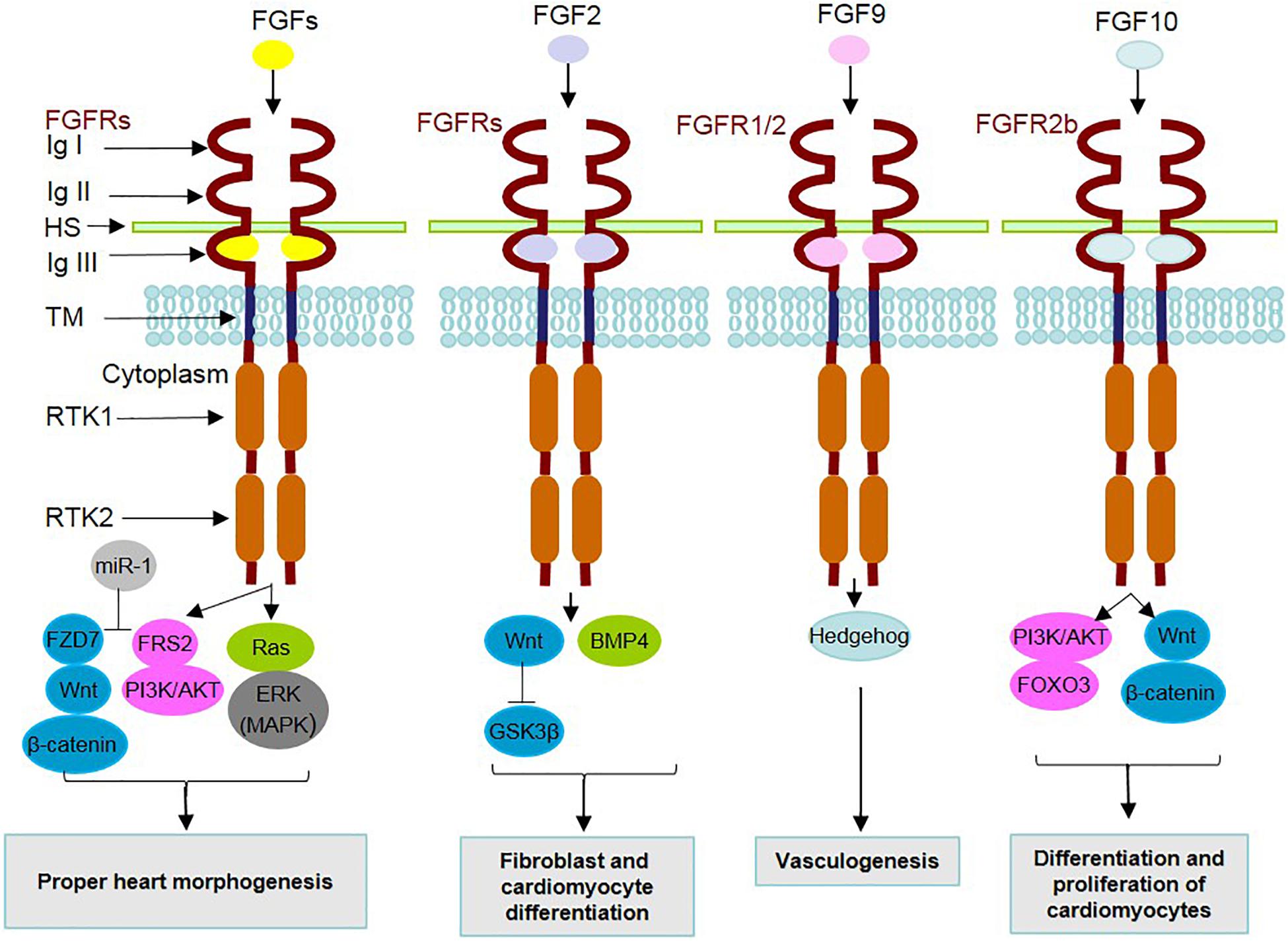Reference




OpenAI's Answer
The Fibroblast Growth Factor (FGF) receptor family interacts with a diverse group of ligands known as fibroblast growth factors. This family includes 22 different members, each playing crucial roles in various biological processes. The ligands are typically grouped into different subfamilies, such as FGF1, FGF4, FGF7, FGF8, and FGF9, which can trigger specific signaling pathways upon binding with the FGF receptors (FGFRs) Wikipedia.
The interaction between FGFs and FGFRs is highly specific and can be modulated by various cofactors. Each FGF can bind to different FGFRs, leading to the activation of distinct signaling cascades that are essential for processes like embryonic development and tissue repair R&D Systems.
Below is an illustrative representation of the FGF ligands and their binding to FGFRs:

For further details on the functions and specificities of each FGF ligand, feel free to explore the additional resources provided.
Follow Up
Related
What is the difference between recursos and medio in didactic?
What are the main differences between the Attic standard and Aeginetan standard?
What are the main differences between The 25th Ward and its predecessor The Silver Case?
What is the difference between bereavement grief and mourning?
How do immune responses differ between normal and milk allergic subjects?